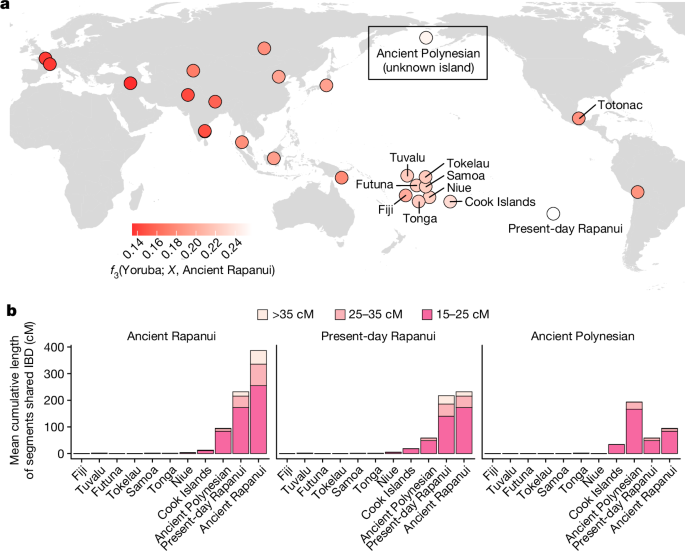Abstract
Rapa Nui (also known as Easter Island) is one of the most isolated inhabited places in the world. It has captured the imagination of many owing to its archaeological record, which includes iconic megalithic statues called moai1. Two prominent contentions have arisen from the extensive study of Rapa Nui. First, the history of the Rapanui has been presented as a warning tale of resource overexploitation that would have culminated in a major population collapse—the ‘ecocide’ theory2,3,4. Second, the possibility of trans-Pacific voyages to the Americas pre-dating European contact is still debated5,6,7. Here, to address these questions, we reconstructed the genomic history of the Rapanui on the basis of 15 ancient Rapanui individuals that we radiocarbon dated (1670–1950 ce) and whole-genome sequenced (0.4–25.6×). We find that these individuals are Polynesian in origin and most closely related to present-day Rapanui, a finding that will contribute to repatriation efforts. Through effective population size reconstructions and extensive population genetics simulations, we reject a scenario involving a severe population bottleneck during the 1600s, as proposed by the ecocide theory. Furthermore, the ancient and present-day Rapanui carry similar proportions of Native American admixture (about 10%). Using a Bayesian approach integrating genetic and radiocarbon dates, we estimate that this admixture event occurred about 1250–1430 ce.
As another user and me were discussing, in another thread about the same topic, I believe that the 10% admix is likely due to coastal settlements here in South America. Nothing too fancy, just to facilitate trade. Specially with the folks in Central Andes, as the Andeans had a good and large (albeit land-based) trade network already. And, well, when you run this sort of settlement you’re bound to interact with locals, right?



